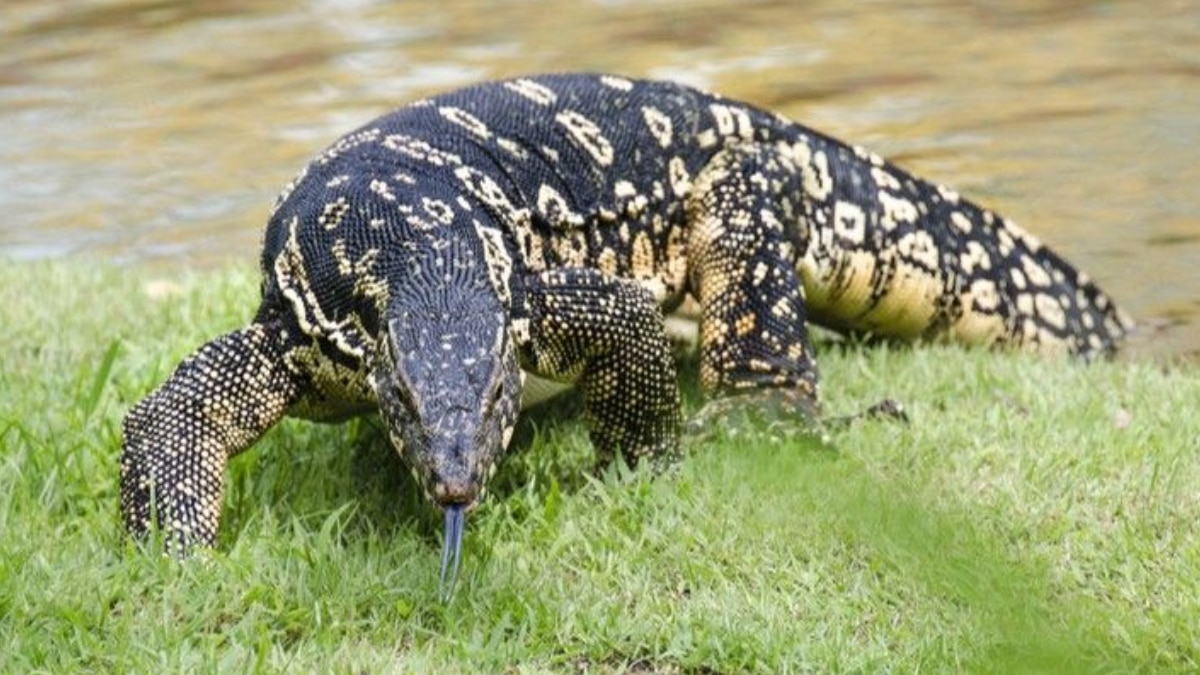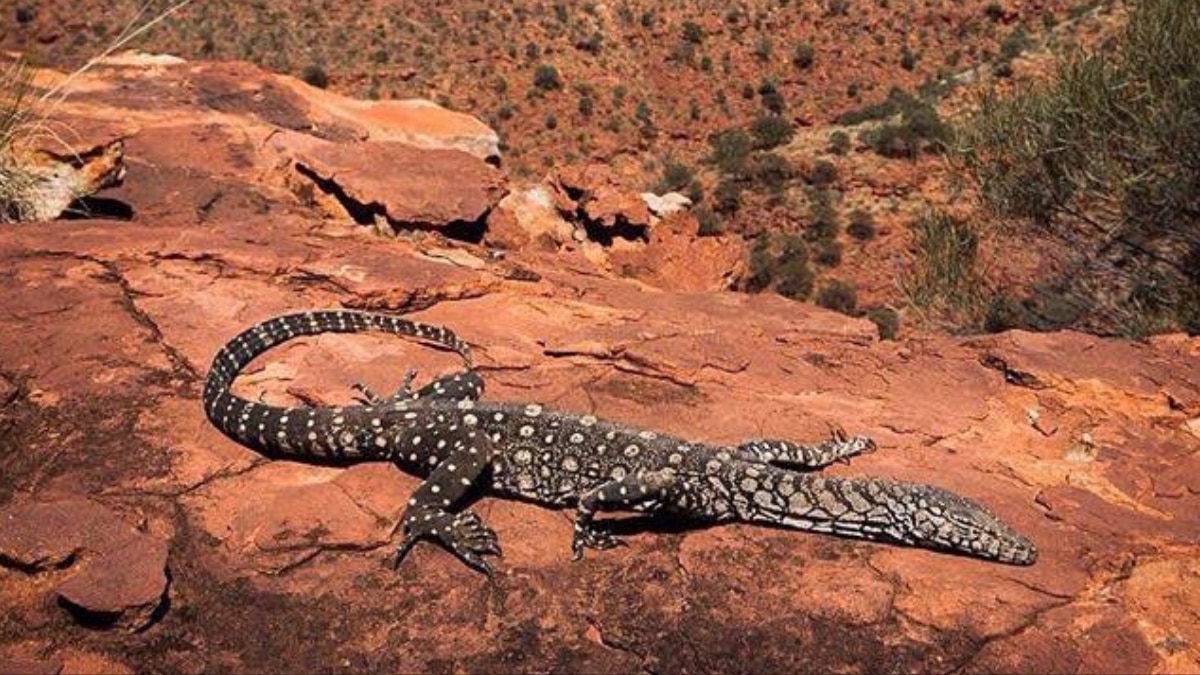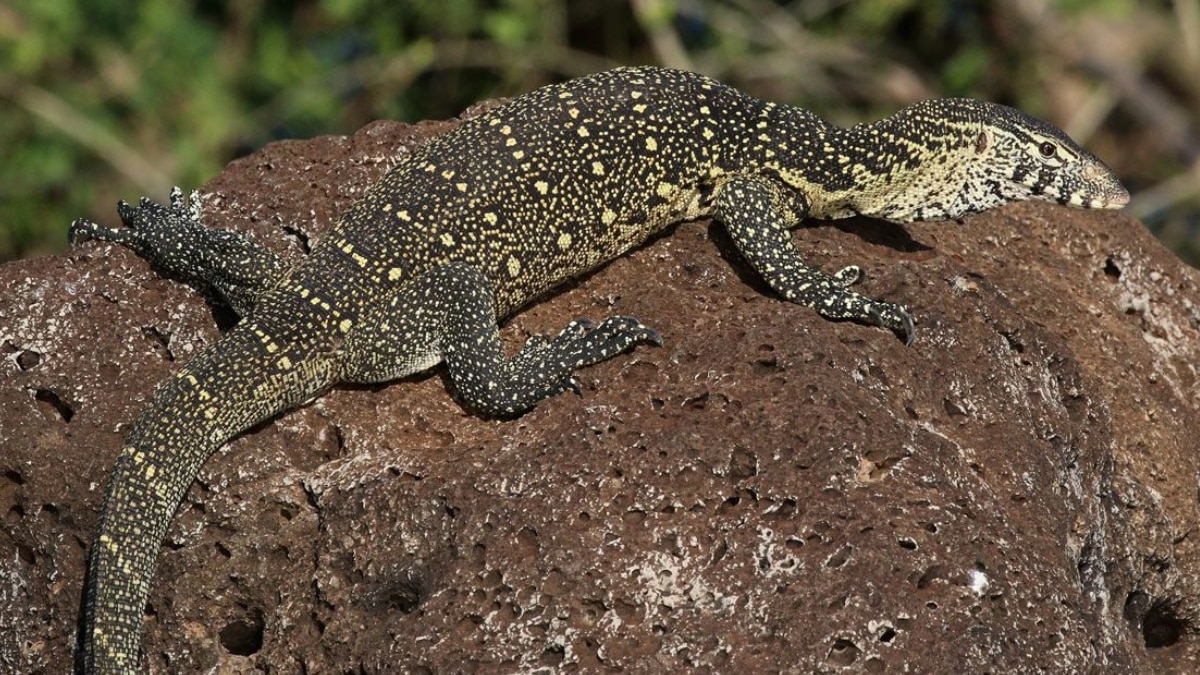Meet The World’s 5 Biggest Lizards That Still Exist Today
From the dense tropical forests to arid deserts, the planet is home to some truly massive lizards. These fascinating lizards looks straight out of a prehistoric movie. These giants dominate their ecosystems and continue to amaze people.
Here's a look at the five largest living lizards in the world, ranked from biggest to slightly enormous.
ALSO READ: 7 Stunning Migratory Birds That Travel Thousands Of Kilometres To Reach India
1. Komodo Dragon
 (Image Source: Pinterest/texastowerpassp)
(Image Source: Pinterest/texastowerpassp)
The Komodo dragon is the largest living lizard. This bona fide predator is found on a few Indonesian islands like Komodo, Rinca, and Flores. These bulky and fearsome reptiles can grow up to 10 feet in length and weigh over 150 kilograms. Despite their size, Komodo dragons are fast and capable of sprinting at speeds up to 20 km/h.
Their venomous bite is what makes them truly terrifying. Researchers have confirmed that they possess venom glands that prevent blood clotting, causing their victims to bleed out. These lizards feed on deer, pigs, water buffaloes, and even smaller Komodos too. Their forked tongues, muscular tails, and armored skin makes them the ultimate reptilian overlords of the reptile world.
2. Asian Water Monitor
 (Image Source: Pinterest/WinterSRT89)
(Image Source: Pinterest/WinterSRT89)
Second in size is the massive and highly adaptable Asian Water Monitor. They're native to South and Southeat Asia, including India, Sri Lanka, Thailand, and Indonesia. This species is known to grow up to 9 feet long.
Unlike the Komodo, the water monitor is semi-aquatic and spends a lot of its time in rivers, lakes, and mangroves. Its muscular tail and strong limbs make it an excellent swimmer. These opportunistic lizards consume everything from fish, crabs, and eggs to birds and small mammals. In urban areas, they've even adapted to scavenge on human waste. The intelligence, agility, and adaptability of Asian water monitor have made them survivors in both wild and human habitats.
3. Crocodile Monitor
 (Image Source: Pinterest/cursedun)
(Image Source: Pinterest/cursedun)
The crocodile monitor isn't the heaviest lizard, but in terms of sheer length, it often surpasses even the Komodo. Native to the dense rainforests of New Guinea, this species can grow to more than 8-9 feet, with its tail making up nearly two-thirds of that length.
It has long limbs, sharp claws, and striking green and yellow patterned scales, which makes this lizard ideal for living in the trees. Being one of the most agile climbers among giant lizards, crocodile monitor is known for its cautious and elusive behaviour in the wild. Though relatively slender, this reptile is all about its muscle and lightning-quick reflexes. It uses its tail like a whip for defense, and its strong jaws deliver a painful, bacteria-rich bite.
4. Perentie
 (Image Source: Pinterest/hfurney)
(Image Source: Pinterest/hfurney)
Australia's largest lizard, the Perentie is a true marvel. It's found primarily in arid central and western Australia. This giant can reach lengths of up to 8 feet. Its combination of speed, strength, and desert resilience, is what sets the Perentie apart from the other giant lizards.
Covered in beautifully patterned cream and dark brown scales, it's a sight that looks stunning against the backdrop of red sand and rocky terrain. They're excellent diggers and can run at impressive speeds, making them one of the fastest large lizards in the world. Ranging from small mammals and birds to carrion and even other reptiles, the Perentie has a fierce diet. Despite their intimidating size, Perenties are shy and prefer to avoid humans.
5. Nile Monitor
 (Image Source: Pinterest/safaribookings)
(Image Source: Pinterest/safaribookings)
Nile monitor is the largest lizard in Africa. Found across sub-Saharan Africa and along the Nile River basin, this species can grow up to 7 feet in length. It has muscular limbs, strong jaws, and an aggressive hunting style which makes it a true top-tier reptile.
Nile monitors are also excellent swimmers and often take to water in order to escape threats or catch prey. Their diet includes fish, frogs, eggs, small mammals, and even baby crocodiles. In some areas, they're seen as pests for raiding chicken coops or eating livestock eggs, but in wild they play an important role in the food chain. These giant lizards are known for their bad temper and strong nail bite.
lifestyle